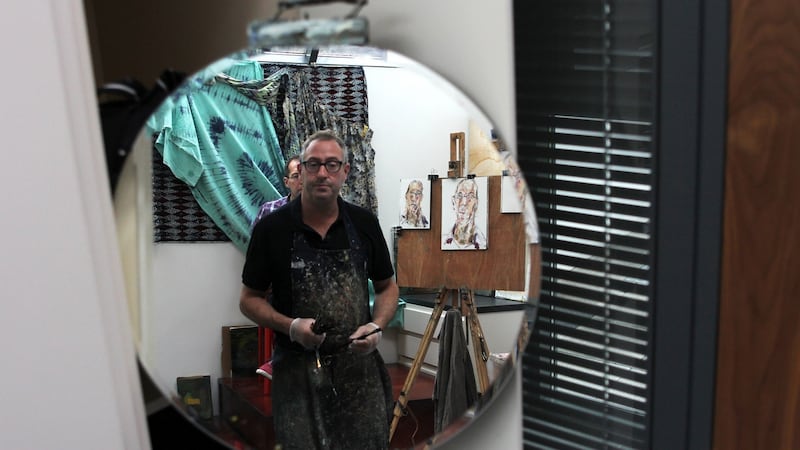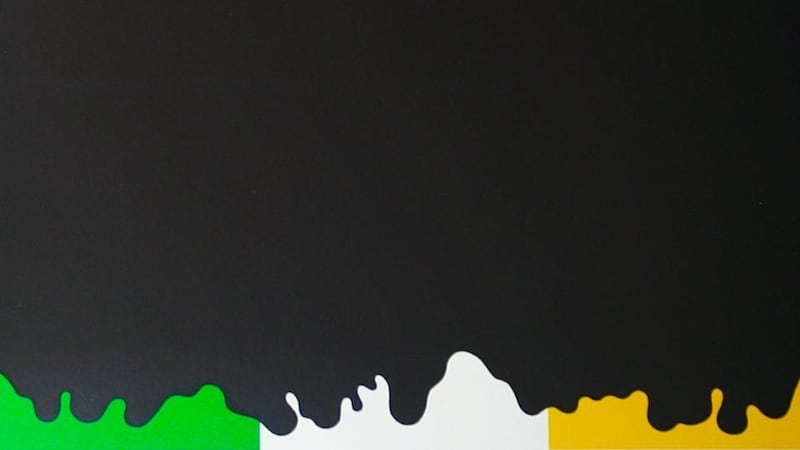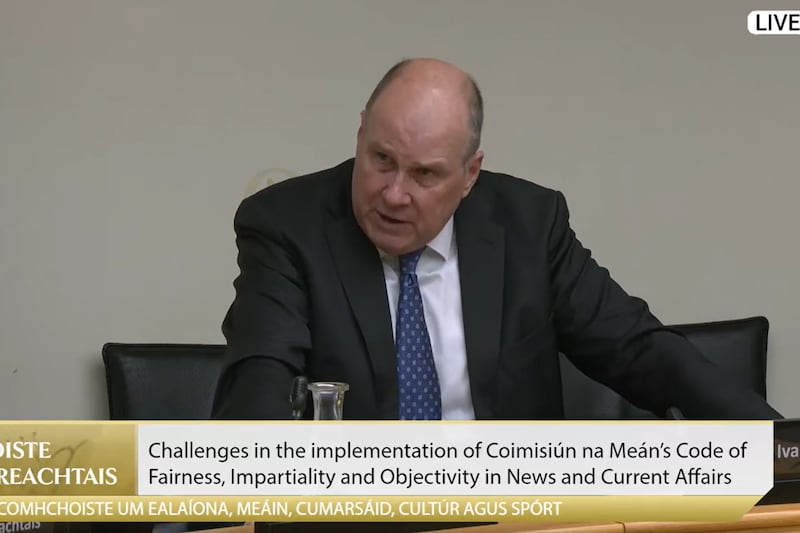It is three decades since local authorities began to cater systematically for the arts. An Arts Council exhibition that is about to tour the country, 30 Years, Artists, Places, demonstrates their fostering of and support for the arts by showing 30 works by 30 artists that a local authority acquired, purchased or commissioned. The range of artists is impressive, from Norah McGuinness to Sean Lynch. So where does that commitment stand today? And what challenges face local arts development?
Each of the country’s 34 local authorities now has an arts programme and an arts budget. The 32 arts officers currently in place are initiators and intermediaries in a political and cultural landscape. Beyond the Arts Council this includes the physical local arts infrastructure and its staff, an extensive client base of individual artists and myriad groups, local authority officials and local politicians.
There is no blueprint for how arts officers should go about their jobs. An ability not to be swallowed up by bureaucracy would seem to be an advantage – but you can bet that not everyone is going to be happy with what they do or don’t do.


Some officers, such as Sheila Deegan, in Limerick, and James Harrold, in Galway city, are well established and seem adept at dealing with political and administrative realities.
Harrold works in a city that might plausibly be described as the festival capital of Ireland. Tulca, the winter festival of visual arts, recently ended. And judging by the figures, with their relatively high budget for arts programming, Galway City Council implicitly recognises that culture is an essential part of Galway’s economic profile; a major plus. That expenditure can be seen as investment that clearly works.
The amount that Limerick spends relative to its population, while not so dramatic, is on the upper side of the national average. The exceptionally energetic Deegan has encouraged cultural incentives other than in terms of direct spending – by, for example, having the city underwrite the cultural use of vacant buildings. She is also long associated with EVA International, the city’s biennial, which, under Woodrow Kernohan, has increasingly found international funding.
Limerick and Galway have communicated the idea that they support creative industry, making environments where artists want to be and building up pools of talent and experience, which in turn feed into events such as EVA and Tulca.
Local authorities, no more than the Arts Council, are acutely aware that they are, on an optimistic reading, just beginning to emerge from a brief but punishing economic Dark Age. In the long term, politically the Arts Council has had to educate local authorities in the reality that the arts are more than capital expenditure on physical infrastructure: arts officers and the 2003 Arts Act are stages in that process.
Go back a couple of decades and you will find a vague assumption that once you built an arts centre the council would take it from there. That was never true, but it became glaringly apparent during the slump, when, in line with other sections of Ireland’s economy, cultural real estate suddenly looked desperately vulnerable.
Compelling
One of the most compelling examples is Carlow’s Visual Centre for Contemporary Art. From its inception, it should be said, Visual was envisaged as a national venue rather than as a local or regional arts centre. That aspiration is embodied in Terry Pawson’s suitably impressive building, in which a vast white-cube central gallery is flanked by several ancillary spaces.
Despite the national ambitions and substantial investment under the government’s Arts and Culture Capital Enhancement Support Scheme, aka Access, Visual was essentially an amazingly bold local-authority initiative. Before it opened there was an awareness that attracting a large national and international audience was both essential and difficult. As a preparatory step Carlow ran a significant annual visual-arts programme under the Visualise banner.
Of course, the Visual that received the green light during the exuberance of the Celtic Tiger eventually opened its doors to another world in the autumn of 2009. Tentative explorations of a partnership with the Irish Museum of Modern Art seemingly stalled. Local authorities nationwide were suddenly facing horrendous difficulties. The political climate was utterly different, much more prone to becoming bitter and negative.
Expectations for Visual, especially in the middle of a recession, were unrealistically high, and those tasked with running it had an unfairly bruising time. Many observers, especially from the vantage point of Dublin, were quick to describe it as a white elephant. For a while its survival seemed in doubt.
Although its future is by no means guaranteed, the centre has survived and now gives the impression of being more realistically grounded. It is an independent entity, although its pragmatic “three pillars” strategy links it closely to Carlow County Council’s arts office – its arts officer, Sinead Dowling, has been there for the long haul – and to Carlow Arts Festival. Its acting chair is a local-authority official, Bernie O’Brien.
Although he is moving on, the festival’s director, Hugo Jellett, did much to maintain equilibrium. Its current chief executive, Ann Mulrooney, is a seasoned curator who was previously with the National Craft Gallery in Kilkenny. Equally, the skill and commitment of Emma Lucy O’Brien, the gallery co-ordinator, have been central to the project. Co Carlow still spends quite a lot on its arts programme, which indicates a continuing commitment to the cultural economy.
Also long in gestation, the Regional Cultural Centre in Letterkenny was equally a victim of bad timing. Even through the boom years Co Donegal regarded itself as something of an economic outsider. When the centre opened, in the summer of 2007, Ireland was already drawing perilously close to the financial precipice.
Donegal was harder hit than many regions, and after a promising beginning the centre bore its share of the impact; it has yet to achieve its undoubted potential. In terms of scale it is substantial but not out of proportion as the principal venue for a far-flung county and the northwest in general.
The centre will host 30 Years, Artists, Places after its showing at Glór. The exhibition will then travel to Ballina Arts Centre, in Co Mayo. Much more modest in scale, the considerably expanded Ballina centre opened in 2011, when things were still very tough. For its director, Sean Walsh, the viability of the centre, which draws funding from the town, Mayo County Council and the Arts Council, depends on the scope and diversity of its programming. It's not a question of lowering standards but of picking up on local clusters of interest and enthusiasm.
There is a plausible line of argument that Ireland is overstocked with substantial and expensive arts venues, partly encouraged by the Cultural Development Incentive Scheme of the 1990s. The list can appear daunting and is not geographically equable.
As well as Letterkenny and Visual, add the Model, in Sligo, the Dock, in Carrick-on-Shannon, the Highlanes Gallery, in Drogheda, the Mermaid, in Bray, Rua Red, in Tallaght, Draíocht, in Blanchardstown, the Luan, in Athlone, and the Riverbank, in Newbridge. And that list is by no means comprehensive.
Even given the cushion of subsidy, however diminished (unlike the country’s commercial art galleries), all without exception were hit by the recession. And the recession put a hold on the development of the Butler Gallery’s new home in Kilkenny, designed by McCullough Mulvin.
The Butler would clearly benefit from a new, larger premises, which would contribute to the quality of life in Kilkenny apart from adding to its appeal as a cultural destination. As it is, the Butler’s director, Anna O’Sullivan, has overseen a programme of world-class exhibitions, exceptionally well curated, in an unduly limited setting. Plus, the gallery owns a fine permanent collection that would certainly appeal to visitors but is usually in storage.
So development makes sense. Galway Arts Centre, that city’s main visual-arts venue, is domestic in scale, and despite an ever-expanding visual-arts programme the city lacks a sizeable venue; the Connacht Tribune Print Works has been an impressive temporary solution.
Regional arts centres have only recently begun to co-operate with each other in organising and touring exhibitions, an obvious and welcome development. In all of this the artists are often last in line. Artists’ fees, integral in other countries, are often an afterthought or even nonexistent in Ireland. But making contemporary art is usually expensive and only sometimes involves the production of saleable objects; in addition, artists deserve return for their labour.
Whichever way you look at it, when the local arts officers set about discussing problems facing local arts development, they will have a lot on their plate.
30 Years, Artists, Places is at Glór (glor.ie), in Ennis, Co Clare, from Monday until January 21st ; a free seminar on the background to the exhibition and the challenges facing local arts development, with Dr Ciarán Benson, Pat Cooke of University College Dublin and Martin Drury of the Arts Council, takes place on Monday at 2pm (register via Glór, on 065-6843103 or boxoffice@glor.ie)


















